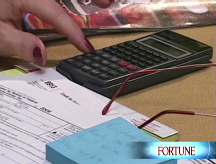Four ways to buy and hold
The market is scary - but if you're a long-term investor who can stomach some volatility, you could make this a very profitable decade.
NEW YORK (Fortune) -- For U.S. investors, 1974 was a very scary year. The country was reeling from the Watergate scandal and the OPEC oil embargo, and Wall Street was in the worst bear market since World War II. By October, the S&P 500 was down 48% from its high two years earlier. It finished December with a value of 68.56, some 19% lower than it had a decade earlier.
But a bold investor who put money into the stock market at the end of 1974 and kept it there would have been richly rewarded. By the end of 1984, that investor would have reaped a total return, including dividends, of 298%. By the end of 1994, that investor's total return would have been 1423%.
To anyone with a 401(k), today's market feels every bit as scary. The S&P 500 has fallen more than 40% and virtually every asset class is falling in value.
If you're investing with a long time horizon, however, this is no time to abandon your plan. In fact, this may be a historically good buying opportunity for investors who can stomach the volatility of the current market. Here are four ways to put your money to work.
Last year when the credit crisis was still unfolding, we asked famed investor Warren Buffett what advice he had for regular investors. "Well, if they're not going to be an active investor - and very few should try to do that - then they should just stay with index funds," he replied. "Any low-cost index fund. And they should buy it over time." On Oct. 17, the Berkshire Hathaway CEO announced, in a New York Times op-ed, that he was buying U.S. stocks. "Equities will almost certainly outperform cash over the next decade, probably by a substantial degree," he wrote.
If you'd like to follow the Sage of Omaha into U.S. equities, one good bet is the Vanguard Total Stock Market index fund (VTSMX). The mutual fund tracks the performance of the MSCI U.S. Broad Market index, which includes over 1,000 of the largest U.S. stocks, and has an expense ratio of just 0.15%. It's as good a way as any to imitate Buffett in buying "a slice of America's future at a marked-down price."
Of all the marked-down slices of the U.S. economy right now, perhaps the most frightening to investors is struggling financial sector - the source of the credit meltdown. But Robert Arnott, who manages $35 billion as the chairman of investment advisory Research Affiliates, sees good value in financial services stocks. "Here's a sector that's still going to be a big part of the economy five years from now, but it is priced as if every company has a 50/50 chance of failing, and the simple reality is that can't happen," says Arnott. "There will be additional failures, but with each one there will be that much less competition and that much more pricing power for the survivors."
One relatively cautious way to play the financial sector's long-term rebound is to buy an exchange-traded fund called the iShares Dow Jones Select Dividend Yield (DVY). The ETF is designed to track the performance of an index of 100 of the market's highest-yielding stocks; since banks tend to be big dividend payers, 50% of the fund's holdings are in financial stocks. The DVY's 4.65% yield is a nice consolation while you're waiting for the market to turn around.
It's not just U.S. stocks that are in a bear market right now, of course. The broad sell-off worldwide - a "take-no-prisoners market," Arnott calls it - has created value in all kinds of assets. For instance, Arnott and other investors see a major buying opportunity in emerging market debt, which has plunged even as money flowed into U.S. Treasuries. "By objective criteria, many of these countries are more credit-worthy than the U.S.," says Arnott. "We have a trillion-dollar current accounts deficit. Most emerging economies have a current-accounts surplus. In the U.S., we're likely to have a trillion-dollar fiscal deficit. Most emerging economies on a fiscal basis are in the black. So which do you want to own: U.S. Treasuries or emerging markets debt at a many hundreds of basis-points premium yield?"
If you're adventurous enough to bet on the repayment prospects of borrowers like the governments of Chile, Hungary and Panama, you can buy an ETF that launched last year called PowerShares Emerging Markets Sovereign Debt (PCY). The relatively small PCY has about $70 million in assets and is designed to track the Deutsche Bank Emerging Market Dollar-Balanced Liquid index. Currently 56% off its 52-week high, the ETF yields more than 8% and makes distributions monthly.
Whether or not you're ready to put your money directly into something as risky-sounding as emerging markets debt, now is a good time to take advantage of the global bear market to diversify your portfolio and buy into discounted global markets, says Mohamed El-Erian, co-CEO of bond giant Pimco. El-Erian, who formerly ran Harvard's $35 billion endowment, believes that we are in a transition period in which the world will rely on a host of nations to drive economic growth rather than just depending on the U.S.
"The average person has to reflect this new reality in his asset allocation," says El-Erian. "In the old days, if I had 100% of my assets in U.S. equities that was OK because that was the most dynamic sector of the global economy. In the new world, you're going to want to have more international exposure."
In fact, El-Erian thinks investors with a 20-year time horizon should have one-third of their equity exposure in U.S. markets, one-third in other advanced markets, and the final third in emerging markets. In addition to bonds, both U.S. and international, El-Erian thinks that investors also need to have about 30% of their money in real assets like real estate, commodities and inflation-protected bonds.
To make it easy for regular investors to accomplish all of this in one fell swoop, on Oct. 29 El-Erian launched a new fund called the Pimco Global Multi-Asset Fund (PGAPX). Using the asset mix above, the objective of the fund is to outperform a 60/40 blend of the MSCI World index of stocks and the Lehman Brothers Aggregate Bond index while incorporating hedging techniques against systemic risk scenarios. El-Erian is the fund's lead manager. With an expense ratio of 0.95%, it's not the cheapest mutual fund, but it offers broad diversification with one of the world's best risk managers at the helm. Over the long term, hopefully, that combination will produce good returns.
Has the beating the market's taken got you wondering about how to invest now? Let us know what you'd like us to address in our next Investor Daily. E-mail Fortune. ![]()
-
 The retail giant tops the Fortune 500 for the second year in a row. Who else made the list? More
The retail giant tops the Fortune 500 for the second year in a row. Who else made the list? More -
 This group of companies is all about social networking to connect with their customers. More
This group of companies is all about social networking to connect with their customers. More -
 The fight over the cholesterol medication is keeping a generic version from hitting the market. More
The fight over the cholesterol medication is keeping a generic version from hitting the market. More -
 Bin Laden may be dead, but the terrorist group he led doesn't need his money. More
Bin Laden may be dead, but the terrorist group he led doesn't need his money. More -
 U.S. real estate might be a mess, but in other parts of the world, home prices are jumping. More
U.S. real estate might be a mess, but in other parts of the world, home prices are jumping. More -
 Libya's output is a fraction of global production, but it's crucial to the nation's economy. More
Libya's output is a fraction of global production, but it's crucial to the nation's economy. More -
 Once rates start to rise, things could get ugly fast for our neighbors to the north. More
Once rates start to rise, things could get ugly fast for our neighbors to the north. More









